Can Sick Leave Roll Over for Exempt Employees
Editor's note: This article is for informational purposes and is not meant to provide legal, regulatory, accounting, or tax advice. This article was last updated April 2021.
Use the Find command (ctrl + F; ⌘ + F on a Mac) to search for specific states or cities.
There's no federal law in the United States requiring paid sick leave law for the private sector, except for an executive order signed by President Barack Obama aimed at federal contractors. Of course, public sector workers – state and federal – are provided paid sick leave as part of the terms of their employment.
Sick leave and paid sick leave is not a new concept, and one part of a larger category of employee leave. It's been reported that some of the workers who built the tombs of Egyptian pharaohs received paid sick leave as well as state-supported health care. Moving to the present, it's been reported that in 2018, an analysis from the Bureau of Labor Statistics found that about 39 percent of American workers in the private sector do not have paid sick leave.
Federal law does require unpaid sick leave. The Family and Medical Leave Act (FMLA) provides for up to 12 weeks of unpaid leave for certain medical situations for either the employee or a member of the employee's immediate family. In general, employees are eligible to take FMLA leave if they have worked for their employer for at least 12 months and work at a location where at least 50 employees are employed by the employer within 75 miles. However, effective Jan. 1, 2017, Executive Order 13706 does require federal contractors and subcontractors to provide paid sick leave.
Right now, the real movement toward providing paid sick leave is happening at the state and municipal level. Currently, 11 states and Washington, D.C. as well as over 30 localities require paid sick leave. Leave duration, accrual, use and reporting requirements vary, making compliance difficult for employers.
Connecticut was the first state to require private sector employers to provide paid sick leave to their employees with a state law that went into effect in 2012. In 2018, several jurisdictions enacted paid sick leave laws. Maryland's legislature overrode a gubernatorial veto of paid sick leave legislation in January 2018 and the law took effect the next month. Michigan became the 11th state to approve mandatory sick leave on Sept. 5, 2018.
New Jersey enacted a mandatory paid sick leave law on May 2, 2018, which went into effect Oct. 29, 2018. Westchester County, New York approved a measure on Oct. 1, 2018 that went into effect in 2019. The Duluth, Minnesota city council adopted an ordinance in May 2018 that goes into effect in 2020 that provides minimum sick leave requirements for businesses.
There is pushback. A few of the local laws (noted below) are in limbo because of legal challenges. More than a dozen states have enacted so-called preemption laws that prohibit municipalities from adopting regulations that expand on state or federal leave requirements.
This is a survey of paid sick leave laws by state and locality.
COVID-19 sick paid leave laws
Each state may also have its own COVID-19 sick leave laws. However, most states will be covered under the temporary federal initiative, Families First Coronavirus Response Act (FFCRA). Originally passed in 2020, the law has been extended to Sept. 30, 2021.
The original FFCRA provided for 80 hours of emergency paid sick leave (EPSL) to be used by employees who were dealing with COVID-related illnesses or care, as well as up to 12 weeks of emergency family and medical leave (EFMLA) to be used to care for the employee's child if the child's school or daycare closed. When the FFCRA was revived through the America Rescue Plan of 2021 (ARPA), the scope of both the EPSL and EFMLA expanded so that employers could voluntarily provide additional leave from April 1, 2021 through September 30, 2021. The FFCRA leave is no longer mandatory.
However, if employers with fewer than 500 choose to comply with the EPSL and EFMLA policies, they can receive reimbursement for the expenses for such leave through a dollar-for-dollar payroll tax credit. To gain the tax credit, employers should not discriminate offering leave to workers based on employee income, their tenure with the company, or their status as full-time employees.
Arizona paid sick leave law
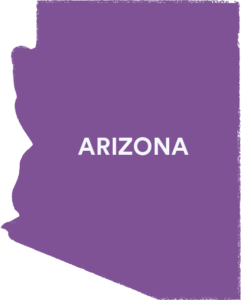 The "Fair Wages and Healthy Families Act" went into effect on July 1, 2017. It requires that full-time, part-time, and seasonal employees be given paid sick leave. Workers will earn 1 hour of leave for every 30 hours worked. Employees begin accruing sick leave on the date they were hired or July 1, 2017, whichever is later. Employers with 15 or fewer employees must provide 24 hours of paid sick leave each year. Those with more than 15 employees must provide 40 hours each year.
The "Fair Wages and Healthy Families Act" went into effect on July 1, 2017. It requires that full-time, part-time, and seasonal employees be given paid sick leave. Workers will earn 1 hour of leave for every 30 hours worked. Employees begin accruing sick leave on the date they were hired or July 1, 2017, whichever is later. Employers with 15 or fewer employees must provide 24 hours of paid sick leave each year. Those with more than 15 employees must provide 40 hours each year.
Paid time off may be used for a variety of reasons with few questions asked, including medical care related to mental or physical illnesses, injuries, health conditions, health-related conditions, and related court appearances. Paid time off may also be granted to those caring for ailing, blood-related family members.
The law prohibits retaliation against workers seeking to exercise their rights, mandates that some unused sick leave may be carried over to a new year and applies to just about all workers, including temporary, seasonal, and part-time staff.
In addition to damages for failing to provide leave, businesses and non-profit groups face penalties for failing to keep adequate records or post sufficient notice about Arizona's paid sick leave laws.
California paid sick leave laws
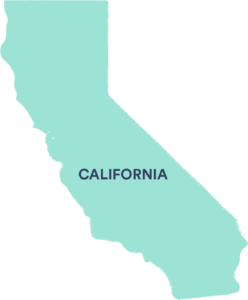 The "Healthy Workplaces, Healthy Families Act of 2014" went into effect on July 1, 2015. It is the nation's second law on paid sick leave, coming after Connecticut passed its paid sick leave law. The law mandates paid sick leave for employees who work in California for 30 or more days within a year from the beginning of employment. Employees, including part-time and temporary employees, earn one hour of paid leave for every 30 hours worked. The California law applies to all employers regardless of size.
The "Healthy Workplaces, Healthy Families Act of 2014" went into effect on July 1, 2015. It is the nation's second law on paid sick leave, coming after Connecticut passed its paid sick leave law. The law mandates paid sick leave for employees who work in California for 30 or more days within a year from the beginning of employment. Employees, including part-time and temporary employees, earn one hour of paid leave for every 30 hours worked. The California law applies to all employers regardless of size.
Paid sick leave must carry over from year to year, but employers can place a cap on accrual of 48 hours. Employers can limit an employee's use of sick leave to 24 hours per year. Employers can also require employees to take sick leave in at least two-hour increments, but not more.
The law does not apply to employees covered by qualifying collective bargaining agreements, in-home supportive services providers, and certain employees of air carriers.
California's sick leave law allows employees to take sick leave for their own health condition or the health condition of a family member, including preventative treatment. Employees may also take sick leave if they are victims of domestic violence, sexual assault, or stalking.
The amount of available sick leave must be recorded on each paystub or in some other written form. Employers must keep records of sick leave accrual and use for three years.
A sick leave poster must be displayed at the workplace.
Certain cities in California have their own paid sick leave requirements that provide additional benefits to employees. In general, employers must follow whichever rule is more generous to employees.
Due to COVID, until Sept. 30, 2021, employers with more than 25 employees must also provide supplemental sick paid leave options.
Berkeley paid sick leave
Berkeley, California joined the long list of local jurisdictions requiring sick leave when it enacted the Paid Sick Leave ordinance on Aug. 31, 2016. The law became operative on Oct. 1, 2017. It requires that all employees, including undocumented workers, earn one hour of paid sick leave for every 30 hours worked. Small business employers with fewer than 25 employees may cap an employee's accrued paid sick leave at 48 hours and may cap the use of paid sick leave to 48 hours per year. Employers with 25 or more employees may cap an employee's accrual of paid sick leave at 72 hours, but may not cap how much paid sick leave an employee uses in a calendar year.
The requirement may be waived in a bona fide collective bargaining agreement if the waiver is explicitly set forth in clear and unambiguous terms.
Accrued, but unused leave carries over from year to year — whether calendar or fiscal year — but cannot exceed the cap.
Covered employees can use the leave for physical or mental illness, injury, or a medical condition; obtaining professional diagnosis or treatment for a medical condition; other medical reasons, such as pregnancy or obtaining a physical examination. Leave can be used for the employee's own need or to care for a family member (child, parent, legal guardian, ward, sibling, grandparent, grandchild, spouse, registered domestic partner) or a designated person if the employee does not have a spouse or registered domestic partner and designates a person for whom leave may be used.
Leave cannot be used for reasons related to domestic violence, sexual assault, or stalking. However, as employers must comply with all applicable laws, employees will be able to use state-accrued leave for such purposes.
Berkeley allows employers to take reasonable measures to verify or document that leave was used for a permitted purpose. Employers, however, cannot require employees to incur documentation or verification expenses exceeding $15.
Wage statements or required writings that must be provided when wages are paid must include the number of accrued paid sick-leave hours. Employers are not required to payout accrued but unused paid sick leave when employees are terminated, resign, retire, or otherwise separate from employment.
Employers must conspicuously post at any workplace or job site in Berkeley where any employee works the city-created notice informing employees of their paid-sick-leave rights. The notice must be posted in any language spoken by at least five percent of employees at the workplace or job site.
Employers must keep employee payroll records for a period of four years that identify hours worked, wages paid, and paid sick leave accrued.
Employers cannot retaliate or interfere with any person exercising protected rights under the ordinance.
Emeryville paid sick leave
Home to Pixar Animation Studios and Jamba Juice, Emeryville's city ordinance requiring paid sick leave for most employees — full-time, part-time ,and temporary — working within the city limits became effective on July 1, 2015. The municipal ordinance built upon the Golden State's requirement that employers provide paid sick leave to both full-time and part-time employees and exceeds state requirements.
Workers accrue one hour paid sick leave for every 30 hours worked. Employees of small businesses — 55 or fewer employees — may accrue 48 hours of paid sick leave a year, and employees of large businesses — 56 or more employees — may accrue up to 72 hours a year.
Employees may use the paid sick leave to care for their own illness or condition, a family member's illness or condition, or their designated individual. Additionally, the employee can use this leave to care for a service dog.
In response to COVID, eligible employees could gain additional paid sick leave time until the end of 2020. While the program ended for employees, employers could still gain tax credits if they continued the program voluntarily until Mar. 31, 2021, in accordant with the Consolidated Appropriations Act.
Los Angeles paid sick leave
The sick leave law for the city of Los Angeles went into effect on July 1, 2016 for large employers — those with 26 or more employees — and on July 1, 2017 for smaller employers — those with 25 or fewer employees. The law allows employees to take up to 48 hours of paid sick time per year.
An employer may provide paid sick leave either by providing the entire 48 hours to an employee at the beginning of each year of employment, calendar year, or 12-month period or by providing the employee one hour of sick leave per every 30 hours worked.
An employer shall provide paid sick leave upon the oral or written request of an employee for themselves or a family member or for any individual related by blood or affinity whose close association with the employee is the equivalent of a family relationship. Paid sick leave may be used for the purposes of preventive care or diagnosis, care, or treatment of an existing health condition, or for specified purposes of a victim of domestic violence, sexual assault, or stalking.
An employer may require documentation to substantiate the need for leave only after an employee has used more than three consecutive days of sick leave.
The exemptions to the California law do not apply. Thus, employers exempted from the California law will still need to comply with the Los Angeles Ordinances. This includes providers of publicly funded in-home supportive services, some employees covered by collective bargaining agreements, certain employees of air carriers, and retired annuitants working for governmental entities.
Retaliation by employers against employees for taking advantage of the law is prohibited.
In late January, Los Angeles also extended its Supplemental Paid Sick Leave Ordinance until "two weeks after the expiration of the COVID-19 local emergency as ratified and declared by the Board." This ordinance includes all employers and employees, including those in the food sector, who work in the unincorporated areas of the County.
Under the Supplemental Paid Sick Leave Ordinance, workers are entitled to a certain amount of pay during their leave if they are self-isolating, taking care of themselves as COVID patients, or caring for close family members who are isolating or COVID.
Oakland paid sick leave
Oakland's paid sick leave law became effective Mar. 2, 2015. Oakland employees — part-time, full-time, and temporary — accrue paid sick leave at the rate of one hour for every 30 hours worked. Small businesses (fewer than 10 employees) may cap accrued sick leave at 40 hours, and all other businesses may cap accrued sick leave at 72 hours. Paid sick leave accruals carry over from year to year.
Employees may use their leave to care for themselves or an immediate or extended family member. Additionally, employees who do not have a spouse or registered domestic partner are given a 10-day designation period after accruing the first hour of sick leave in order to designate an individual they would like to be covered under this policy.
The Oakland ordinance includes an anti-retaliation provision that prohibits employers from discharging, reducing compensation, or otherwise discriminating against an employee for asserting his or her rights.
Employers are required to maintain records of wages and paid sick leave accrual and use for at least three years, and are required to provide a copy of these records to an employee upon the employee's reasonable request.
Employers are required to post a notice informing employees of their rights under the new law and must give current employees and new hires written notification of their rights as well.
Similar to Los Angeles, Oakland has extended its emergency sick paid leave. Small businesses that employ fewer than 50 employees, except for unregistered janitorial employers of franchisees associated with a franchisor or network with over 500 employees, are exempt.
Full-time employees can take up to 80 hours sick leave to deal with a COVID related illness or care for someone with a COVID-related illness. For employees who work fewer than 40 hours per week their sick leave is an amount equal to the average number of hours the employee worked within the City of Oakland between Jan. 1, 2021, through Jan. 21, 2021.
San Diego paid sick leave
San Diego's sick leave law went into effect on July 11, 2016.
Employers must provide each employee with earned sick leave. Employees accrue no less than one hour of earned sick leave for every 30 hours worked within the geographic boundaries of the city. Employers may cap the total accrual of sick leave at 80 hours. Any unused accrued earned sick leave must be carried forward to the following benefit year.
Employers may limit an employee's use of earned sick leave to 40 hours in a benefit year.
Employees may use earned sick leave for their own medical care or for the medical care of a family member.
Employers have to post a notice in the workplace informing employees of their rights to the earned sick leave, including information about the accrual and use of earned sick leave, the right to be free from retaliation for taking advantage of the leave.
Similar to other major cities and counties, San Diego decided to extend its COVID-19 related paid sick leave package for employers with over 25 employees on March 29th, 2021. Full-time workers are entitled to up to 80 hours of paid sick leave if dealing with a COVID-related illness.
San Francisco paid sick leave
Under the San Francisco Paid Sick Leave Ordinance, employers must provide paid sick leave to every employee who performs work either full or part-time in San Francisco. Paid sick time begins to accrue 90 days after the employee's first day of work. Employees earn 1 hour of paid sick leave for every 30 hours of work. For employers with less than 10 employees, the required paid sick leave is capped at 40 hours. For employers with 10 or more employees, paid sick leave is capped at 72 hours.
Leave time earned does not expire and carries over to the next year. However, an employee can use as many sick leave hours in one year as they wish, so long as they have not reached the total cap.
Sick leave can be taken for illness, injury or to seek medical treatment or diagnosis for the employee, a family member or other designated person.
Santa Monica paid sick leave
Santa Monica's paid sick leave law went into effect on Jan. 1, 2017. The beachfront community was quick to point out that its law was more generous than existing state law requirements on sick leave. Employees, which includes full-time, part-time, and temporary workers, accrue 1 hour for every 30 hours worked. Employees can earn up 40 hours for small businesses (25 or fewer employees), and 40 hours for larger businesses (those with 26 or more employees).
Employees can use the leave to recover from an illness, for treatment involving an illness and for preventive care for the employee or a family member.
Employers can front load sick leave at the start of the fiscal, calendar or anniversary year. Employees can carry over unused accrued leave up to 32 hours for small businesses and 40 hours for large businesses.
The ordinance prohibits retaliation against employees who take advantage of the leave.
Sonoma County
In early February, Sonoma County updated and extended its COVID-19 supplemental paid sick leave ordinances. Unlike the original ordinance, the extended version now applies to all employers in the unincorporated area. Currently, the ordinance is meant to last until June 30, 2021.
 Colorado paid sick leave law
Colorado paid sick leave law
On Jan. 1, 2020, the Healthy Families and Workplaces Act went into effect in Colorado. Employers with over 15 employees are now required to provide workers with one hour of paid sick leave for every 30 hours worked. Paid sick leave hours can be capped at 48 hours. Businesses who employee less than 15 workers won't have to comply with this law until Jan. 1, 2022.
Employees can use their paid sick leave to care for their own physical or mental health, care for sick family members, or seek assistance for domestic violence, harassment, or sexual abuse for themselves or family members. Furthermore, workers can use their hours if a public health official has closed the employee's business, or if the employee's school or place of care has closed due to a health emergency.
 Connecticut paid sick leave law
Connecticut paid sick leave law
Connecticut is the first state to have required that employers provide paid sick leave. The state's Paid Sick Leave Act became effective January 2012. The law is aimed at large employers; so, employers who employ 50 or more people in any one quarter of the previous year must provide one hour of paid sick leave for every 40 hours worked by a service worker up to 40 hours per year. The statute defines a service worker as an hourly, nonexempt employee engaged in an occupation with one of the "broad or detailed occupation code numbers and titles" listed under Connecticut law.
Part-time workers are covered by the law; but, temporary workers are not. Non-profit and certain other employers are exempted from this law.
Workers can use the leave for several purposes, including for the worker's mental physical illness, injury or health condition or preventative medical care for a worker; for the worker's child's or spouse's mental or physical illness, injury or health condition including preventative medical care; and in instances where the worker is a victim of family violence or sexual assault including psychological counseling or to participate in any civil or criminal proceedings related to or resulting from such family violence or sexual assault.
Employees can carry over up to 40 unused accrued sick leave hours to the next year, but no employee can use more than 40 hours in any calendar year.
Employers cannot retaliate against service workers who request or use eligible leave.
 Illinois paid sick leave laws
Illinois paid sick leave laws
The Illinois Employee Sick Leave Act requires Illinois employers who provide personal sick leave benefits to their employees to allow employees to take such leave for absences due to the illness, injury, or medical appointment of the employee's child, spouse, sibling, parent, mother-in-law, father-in-law, grandchild, grandparent, or stepparent.
The leave must be granted on the same terms under which the employee is able to use sick leave benefits for his or her own illness or injury. The act goes into effect on Jan. 1, 2017. All Illinois employers who provide personal sick leave benefits to their employees are covered by the act. The act does not require employers to adopt sick leave policies if they do not already have them in place. However, under the Chicago Paid Sick Leave Ordinance that went into effect on July 1, 2017, many employers in Chicago are required to provide eligible employees with paid sick leave.
Chicago paid sick leave
The city of Chicago's paid sick leave ordinance requires every employer in the city to provide paid time off to employees for sick leave. The city law went into effect on July 1, 2017. Employees who work at least 80 hours within any 120-day period paid sick leave are covered by the ordinance. Domestic employees, day laborers, tipped workers, and home health care workers are included. For every 40 hours worked, an employee earns one hour of paid sick leave. Salaried employees who are exempt from overtime requirements accrue one hour of paid sick leave for each week of employment.
Sick leave may be used by employees to care for themselves or their families when they are sick, to receive medical care, and if the employee or family member is the victim of domestic violence or sexual abuse.
Paid sick leave hours are capped at 40 hours per 12-month period, unless the employer sets a higher limit. At the end of a 12-month accrual period, employees must be allowed to carry over up to half of unused paid sick leave (a maximum of 20 hours) unless the employer sets a higher limit.
If subject to Family and Medical Leave Act (FMLA), each employee must be allowed to carry over up to 40 hours of unused paid sick leave, in addition to half of all unused paid sick time, to use exclusively for FMLA-eligible purposes.
If an employee is absent for more than three consecutive work days, employers may require documentation for the use of paid sick leave. Employers are required to post a notice of paid sick leave in their business facilities. Employers must maintain records of paid sick leave accrued and make such records available to the Commissioner of the Department of Business Affairs and Consumer Protection (BACP) upon request.
Employers may not discriminate or take any adverse action against any employee in retaliation for exercising rights under the sick leave ordinance.
The requirement may be waived under a bona fide collective bargaining agreement if done so explicitly in clear and unambiguous terms.
Cook County paid sick leave
The paid sick leave requirement for Cook County, Illinois, went into effect on July 1, 2017 and affects all Cook County employers. The law is similar to Chicago's ordnance. Individuals are entitled to benefits under the ordinance if they work at least 80 hours for a covered employer in any 120-day period. Employees accrue one hour of paid sick leave for every 40 hours worked with a maximum of 40 hours of paid sick leave in each 12-month period of their employment.
Employees may use paid sick leave for their own illness, injuries, or medical care (including preventive care) or for the illness, injuries, or medical care of family members. Employees also can use paid sick leave if either the employee or a family member is a victim of domestic violence or a sex offense.
Employers may require that employees using paid sick leave for more than three consecutive workdays provide certification that the leave was for a qualifying purpose.
Employees may carry over half of their unused paid sick leave (up to 20 hours) to the next 12-month period. Accrued sick leave need not be paid out upon termination or separation of employment.
Employers must post notice of employees' rights to the leave in a conspicuous place at each facility where any covered employee works that is located within the county.
Employers cannot retaliate against workers for exercising their rights under the leave.
 Maine
Maine
Maine's new sick leave law went into effect on Jan. 1, 2021. An Act Authorizing Earned Employee Leave. The new law mandates that employees can accrue one hour of paid leave time for every 40 hours worked at their base rate of pay, for a maximum of 40 hours of paid time off per year.
The paid leave law is expected to benefit 85% of the workers in the state, according to a press statement from Gov. Mills' office, affecting about 200,000 Maine workers.
Small employers — those with fewer than 10 workers — will be exempt from the law, which also does not apply to seasonal businesses. The governor's office has estimated that this means that the bill exempts more than 40,000 of Maine's 50,792 businesses.
 Maryland paid sick leave laws
Maryland paid sick leave laws
The "Maryland Healthy Working Families Act" became effective Feb. 11, 2018. Maryland employers with 15 or more employees must provide up to 40 hours of earned, paid sick, and safe leave. Employers may offer one hour of leave for every 30 hours worked or may offer the entire 40 hours of leave at the beginning of the year. Employers with 14 or fewer employees must offer unpaid sick and safe leave.
Employees may carry over up to 40 hours of leave per year under the law. Employers may cap the use of paid leave at 64 hours per year and may also cap the accrual of leave at 64 hours total and 40 hours per year.
Employees can use leave for the physical or mental health of the employee or a family member; for maternity or paternity leave; or to obtain relief in response to a domestic or sexual assault of the employee or a family member.
Maryland's sick leave law does not apply to employees who regularly work fewer than 12 hours a week; are under the age of 18; are independent contractors; work in the agricultural sector on an agricultural operation; or work on an as-needed basis in the health or human services industry; or, to those who are subject to a collective bargaining agreement.
Employers must provide each employee with a written statement that documents the amount of earned sick and safe leave available to them, per pay period and are required to retain records of all earned sick and safe leave accrued and used by each employee for at least three years.
The state law preempts any local paid sick leave law passed after Jan. 1, 2017, so the paid sick leave law passed by Montgomery County in 2016, which provides more requirements for employers, remains in force, but the state law preempts local sick leave laws such as the one passed in Prince George's County, Maryland.
Montgomery County paid sick leave
Montgomery County's "Earned Sick and Safe Leave Law" became effective Oct. 1, 2016. Employers are required to provide employees with paid sick and safe leave. Independent contractors are not covered under the law; but, a person who regularly works in the county more than eight hours each week qualifies for coverage.
An employee must earn one hour for every 30 hours worked in the county up to 56 hours in a year. For employers with fewer than five employees, employees may accrue up to 32 hours of paid leave and 24 hours of unpaid leave, and may not use more than 80 hours of earned leave a year. For employers with five or more employees, employees may earn up to 56 hours per year of paid sick and safe leave and may not use more than 80 hours of earned leave a year.
The law provides minimum standards. An employer can provide more earned sick and safe leave than is required in the county law.
Sick and safe leave may be used by employees to care for the employee's own or a family member's mental or physical illness or injury, parental leave, or issues related to domestic violence, sexual assault, or stalking.
Up to 56 hours of leave can be carried over, unless an employer awards the full amount of leave that the employee would earn over the year at the beginning of the year.
An employer can require documentation if an employee uses more than three consecutive days. Employers must keep records of earned sick and safe leave for three years. Employers do not have to pay employees for unused leave when the employee leaves the company.
An employer is prohibited under the law from taking adverse action against an employee who exercises his or her rights under the Maryland law.
 Massachusetts paid sick leave law
Massachusetts paid sick leave law
Massachusetts' Earned Sick Time for Employees went into effect on July 15, 2015. Employers with 11 or more employees must provide up to 40 hours of paid sick time per calendar year. Employers with fewer than 11 employees must provide up to 40 hours of unpaid sick time per calendar year. Most workers – full-time, part-time, seasonal, per diem, and temporary – are eligible.
Workers may use earned sick time if they are ill or injured or have a routine medical appointment. They can also use earned sick time for their child, spouse, parent, or spouse's parent. In addition, workers may use earned sick time to deal with domestic violence involving themselves or their children.
Employers can ask for a doctor's note or other documentation only in limited circumstances. For example, they can ask for a doctor's note when an employee misses more than three consecutive workdays.
Employers must post a notice of employee rights in the workplace and either give a copy of the notice to each worker or include the employer's sick time policy in any handbook or manual.
Employers cannot retaliate against workers who take advantage of the leave law.
In addition, paid leave benefits from the Massachusetts Paid Family and Medical Leave came into effect in late January, 2021. W-2 employees, self-employed individuals, and 1099-MISC workers who are not independent contractors can now take 12 weeks of paid family leave, and 20 weeks of paid medical leave for their own health condition. If they are caring for a family relation who is also a service member, they can take up to 26 weeks.
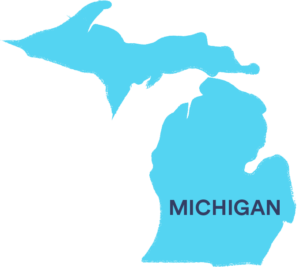 Michigan paid sick leave law
Michigan paid sick leave law
Michigan became the 11th state to approve a mandatory paid sick leave law, the Earned Sick Time Act, on Sept. 5, 2018. The act takes effect in March 2019. The act was a citizen petition-initiated measure that the state legislature approved. The act will apply to all private employers employing one or more individuals.
Employees accrue a minimum of one hour of earned sick time for every 30 hours worked. All employees (full-time or part-time) would be entitled to use 72 hours in a year, but whether that time is paid or unpaid depends on the size of the employer. Employees of "small businesses" (employers with fewer than 10 employees) may accrue up to a maximum of 40 hours of paid sick time and 32 hours of unpaid sick time each year unless the employer selects a higher limit. Employees of businesses with 10 or more employees may accrue up to 72 hours of paid sick time per year unless the employer selects a higher limit. Earned sick time carries over from year to year, but the annual maximums apply.
An employee may use earned sick time for his or her own mental or physical illness or condition, medical diagnosis or treatment, preventative medical care, relocation related to domestic violence or sexual assault, participation in criminal proceedings related to domestic violence or sexual assault, and other categories set forth under the act. Employees may also use earned sick time to support a family member for similar reasons.
Reasonable documentation may be required for earned sick time of more than three consecutive days. If an employer requires documentation, the employer is responsible for paying all out-of-pocket expenses the employee incurs in obtaining the documentation.
Employers must provide written notice of an employee's rights under the act.
Employers may not retaliate against an employee for engaging in activity protected by the act.
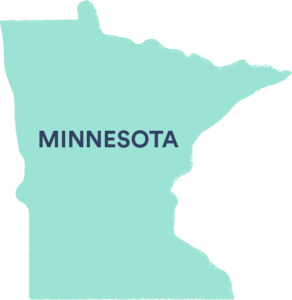 Minnesota paid sick leave laws
Minnesota paid sick leave laws
There is no Minnesota state law requiring private employers to grant their employees sick leave, paid or unpaid, although many employers do grant it as a common employee benefit. However, three of Minnesota's largest cities have passed sick leave laws.
Despite this, bill HF7 has passed the House and has entered the Senate. If passed, it would allow employees to earn one hour for every 30 hours worked for paid sick leave. It could be used 90 days after starting a job and be carried over to the next year.
Duluth paid sick leave
The latest jurisdiction to require mandatory paid sick leave, the Duluth City Council adopted an ordinance in May 2018 that provides minimum safe and sick leave requirements for businesses. The law becomes effective Jan. 1, 2020.
The ordinance applies to employers with five or more employees nationwide and requires employers located to allow employees who work within Duluth for more than 50 percent of the employee's working time in a 12-month period to accrue paid sick leave time. The law has a unique accrual rate. Most laws allow employees to accrue leave at 30, 35, or 40 hours worked. Duluth's employees will accrue one hour of paid sick leave for every 50 hours worked, up to a total of 64 hours per year, though use of sick leave may be capped at 40 hours per year.
Employees will be able to use sick leave for time needed for diagnosis, care, treatment, or recovery from an employee's mental or physical illness, injury, or other health condition, or for preventive medical care; time needed for the employee to care for a family member needing diagnosis, care, treatment, or recovery from the family member's mental or physical illness, injury, or other health condition, or requiring preventive medical care; or an absence due to domestic abuse, sexual assault, or stalking of the employee or employee's family member.
Family members can include domestic partner, grandparent, grandchild, and any other individual related by blood or whose close association with the employee is the equivalent of a family relationship.
Employers may require documentation of the need for sick leave for absences of more than three consecutive days.
Employers will be required to provide notice to employees of their entitlement to paid sick leave and their rights under the ordinance.
But, a legal cloud hangs over the scope of the Duluth ordinance due to a state district court decision that rejected a Minneapolis effort to require employers not located within the city limits to provide paid sick leave to their employees who work within the city. The city has appealed the court's decision. Whether Duluth's ordinance will be applicable to employers outside of its city limits will likely depend on the outcome of the litigation concerning the Minneapolis PSL ordinance.
In addition to their regular sick leave policy, Duluth also has an Earned Sick and Safe Time (ESST) program. Under ESST, all employers with at least five employees must guarantee time off to take care of their mental or physical health or care for a family member. It does not apply to independent contractors, student interns, seasonal employees, or certain railroad workers.
Minneapolis paid sick leave
Minneapolis' ordinance providing paid sick leave is on hold and not being enforced against employers because of a pending court case.
The City of Minneapolis' Sick and Safe Time Ordinance was originally set to go into effect on July 1, 2017. It created access to time off work for employees across the city. Full and part-time staff, temporary employees, and paid interns are included. Employers with six or more employees must provide paid sick and safe time. Employers with five or fewer employees must provide sick and safe time, but they may choose to provide it unpaid. In addition, until July 1, 2022, during an employer's first year of operation (except a new location in an existing chain), it may provide sick and safe time as unpaid.
Employees who typically work at least 80 hours in a benefit year within the geographical boundaries of Minneapolis are covered under the Sick and Safe Time Ordinance.
Sick and safe time accrues at a rate of one hour for every 30 hours worked. An employer may cap an employee's accrual at 48 hours per year. An employer may also limit the total amount of unused sick and safe time in an employee's "bank" to 80 hours during subsequent years. These two limits, 48 hours per benefit year and a maximum accrual cap of 80 hours, operate in tandem.
Employees can use the leave for the treatment, recuperation, or preventative care for a medical or mental health condition, illness, or injury of the employee or covered family member; to seek law enforcement, counseling, or other services for domestic abuse, sexual assault, or stalking suffered by the employee or covered family member; or to care for a family member during emergency closure of a school or place of care, including for inclement weather.
In a lawsuit brought against the city of Minneapolis in the case of Minnesota Chamber of Commerce et al v. City of Minneapolis, Court File No. 27-cv-16-15051, the Hennepin County District Court issued an injunction prohibiting the city of Minneapolis from enforcing the Sick and Safe Time Ordinance against any "employer resident outside the geographic boundaries of the City." This case is currently on appeal to the Minnesota Court of Appeals. As a result, the ordinance will not be enforced against any employer outside the city of Minneapolis pending a decision by the Court of Appeals.
St. Paul paid sick leave
On Jan. 1, 2018, all Saint Paul employers with employees working in Saint Paul must provide earned sick and safe time to their employees. Full‐time, part‐time, temporary, or paid on‐call employees who work a minimum of 80 hours or more in a reporting year in the city of St. Paul are covered.
Employees accrue one hour for every 30 hours worked, and accrue up to 48 hours in one year. Employees can bank hours up to a balance of 80 hours.
The leave can be used for an employee's absence from work due to illness, medical appointments, or critical safety issues, including domestic violence, sexual assault or stalking.
These rules are subject to change pending the outcome of Hennepin County District Court Case Minnesota Chamber of Commerce et al v. City of Minneapolis, Court File No. 27-CV-16-15051, the St. Paul government has noted on its website. The case is currently on appeal to the Minnesota Court of Appeals.
 Nevada
Nevada
Nevada became the second state to mandate that large employers provide paid leave for any reason. The law went into effect Jan. 1, 2020.
Private employers with 50 or more employees in the state are required to provide 40 hours of paid leave for any reason to employees who work 40 hours a week under the new law. However, new employers are not required to comply with the law during the first 2 years of operation.
The bill was signed by Nevada Gov. Steve Sisolak on June 13, 2019.
The new law requires that employees accrue at least 0.01923 hours of paid leave for each hour worked in a "benefit year." This means that employees who work 40 hours a week would be entitled to about 40 hours of paid leave per year.
The employer determines what constitutes the "benefit year." The paid leave law defines a "benefit year" as a 365-day period used by an employer when calculating the accrual of the leave.
Employees can use the paid leave after 90 days of employment with the employer, and use the leave for any reason.
Employers cannot require an employee to provide an explanation for using the paid leave or require that the employee find a replacement as a condition for taking advantage of the time off from work.
However, employers can place some limitations, such as:
- Limit the use of the paid leave to 40 hours within a benefit year
- Require that employees take no less than 4 hours of leave at a time
- Require that new employees wait 90 days before using accrued paid leave
Employees may carry over up to 40 hours of unused paid leave.
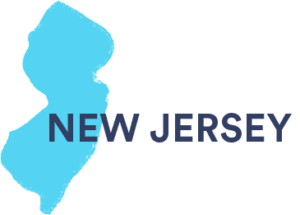 New Jersey paid sick leave law
New Jersey paid sick leave law
New Jersey is the 10th state to enact a paid sick leave law. The New Jersey Paid Sick Leave Act went into effect Oct. 29, 2018. It preempts 13 existing New Jersey municipalities earned sick leave laws. All employers are affected. Employees accrue one hour of sick leave time per 30 hours worked, with a cap of 40 hours per year. Alternatively, an employer may "frontload" the full 40 hours at the beginning of the benefit year. Employers must pay employees for earned sick leave time at their regular rate of pay. Employees are defined as those working in the state for compensation.
Employees can use earned sick leave time for preventive medical care, diagnosis, care, treatment of, or recovery from the employee's mental or physical illness, injury or other adverse health condition; to aid or care for a family member, including domestic partners; or for time needed stemming from the employee's or family member's status as a victim of domestic or sexual violence; and for school-related conferences or meetings.
- Allows employers to request reasonable documentation only if an employee is absent for three or more consecutive day.
- Allows employers to prohibit the use of foreseeable earned sick leave time on certain dates.
- Prohibits employers from discriminating or retaliating against employees for requesting or using earned sick leave time.
- Requires employers to keep records of hours worked and earned sick leave time used by each employee for five years and to post a notice in the workplace of employees' rights under the act.
The act expressly excludes employees in the construction industry employed under a collective bargaining agreement, per diem healthcare employees, and public employees who already have sick leave benefits.
Employers must post a notification of employees' rights under the act and provide employees with a written copy of the notice within 30 days after state officials have issued a model notice and each time an employee is hired or requests such a notice.
The act preempts all existing and future municipal ordinances in New Jersey regarding paid sick time. There are presently 13 New Jersey municipalities with paid sick time ordinances: Bloomfield, East Orange, Elizabeth, Newark, Jersey City, Paterson, Passaic, Trenton, Montclair, Irvington, New Brunswick, Plainfield, and Morristown. All of these ordinances will become moot upon the effective date of the Act.
In addition, employees can use their accrued earned sick leave hours towards COVID testing, recovery and illness. Employees cannot be fired for taking time off to test, quarantine, or isolate.
 New Mexico paid sick leave laws
New Mexico paid sick leave laws
Starting on July 1, 2021, private employers with at least one employee will be required to provide paid sick leave to employees. This new provision is linked to House Bill 20, which includes the Healthy Workplaces Act (HWA). The HWA includes many other provisions.
Full-time, part-time, seasonal, and temporary workers are now able to collect earned sick leave (ESL), gaining one hour for every 30 hours worked. Employees can use up to 64 hours of their ESL in a year. And while employees can carry over unused ESL, employers have the right to not allow workers to use more than 64 hours in that twelve-month period. Employers who offer a PTO that is similar to the HWA policy, then they don't need to offer additional ESL.
There is no waiting period for ESL, and accrual begins on July 1, 2021. Employers must let employees know their rights through notices. On the employee side, they are required to let their employers know in advance when they plan to take a leave. Employees can use their ESL to attend to their own health needs, to care for family members, attend meetings regarding childcare or their child's health, or deal with domestic abuse, sexual assault, and stalking.
Employers cannot retaliate against employees who take this leave and employers must retain records for hours worked and paid sick leave used during a four-year period.
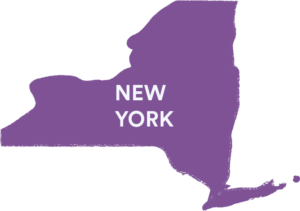 New York paid sick leave laws
New York paid sick leave laws
On Sept. 30, 2020, New York State required all employers to begin implementing a paid sick leave policy. Employees could start using their New York State Sick Leave (NYSSL) hours as of Jan. 1, 2021.
Employers can either front load all hours at the beginning of the year, or choose to let employees accrue their hours as they work. Thirty hours of work will earn a worker one hour of paid sick leave. This time can be used by employees to deal with their own health or wellbeing, or care for a sick family member. It can also be used for time off for victims of domestic violence, family offense, sexual offense, stalking or human trafficking, or to care for family members who have suffered similar offenses.
In order to take their sick leave, employees must first let their employer know when and why they intend to take time off. The employer must get back to them about their leave within three days.
How much time employees get off depends on the company size and income:
- Employers with a minimum of 100 employees – 56 hours of paid sick leave.
- Employers with up to 100 employees – 40 hours of paid sick leave.
- Employers with up to five employees and a net income in excess of $1 million in the previous tax year – 40 hours of paid sick leave.
- Employers with up to five employees and a net income of less than $1 million in the previous tax year – 40 hours of unpaid sick leave.
In addition, as a part of the NY Paid Family Leave initiative, eligible employees in 2021 are now able to take up to 12 weeks leave to bond with a new child, care for a family member with a serious health condition, and assist loved ones if an military family member goes on active duty. While not officially a sick leave plan, this benefit does allow employees to take care of sick family members.
New York City paid sick leave
New York City is the largest jurisdiction to offer paid sick leave. The went became effective Apr. 1, 2014. New York City employers with 5 or more employees who are employed for more than 80 hours a calendar year in New York City must provide paid sick leave. Employers with fewer than five employees must provide unpaid sick leave.
The law covers full-time, part-time, temporary, per diem, on call, and undocumented employees as well as domestic workers. Employers with one or more domestic workers who have worked for the employer for at least a year and who work more than 80 hours a calendar year must provide paid sick leave. Independent contractors are not covered by the law.
The leave may be used to care for the employee's own or a family member's mental or physical illness or injury, as well as for preventive medical appointments.
Up to 40 hours of unused sick leave can be carried over to the next calendar year. However, employers are only required to allow employees to use up to 40 hours of sick leave per calendar year.
Employers may require medical documentation for absences of more than three consecutive days.
Employers must distribute or post explanatory written sick leave policies.
An employer cannot retaliate against an employee for exercising or attempting to exercise rights under the law, including requesting and using sick leave.
New York first responders and other state employees who developed health conditions after working at the World Trade Center site following the 9/11 terror attacks are entitled to unlimited sick leave at 100% of their regular salary, effective Sept. 11, 2017.
Westchester County paid sick leave
On Oct. 1, 2018 Westchester County, New York lawmakers approved an earned sick leave law with a "first of its kind" preemption provision. The Westchester County law is effective in 180 days.
Employers with five or more workers must provide up to 40 hours of paid sick time a year. Employers with less than five workers must provide up to 40 hours of unpaid sick time a year.
Employees accrue one hour of sick time for every 30 hours worked and may earn and use up to 40 hours in a year.
Unused time may be carried over to the following year, although the employer can cap the maximum amount of sick leave taken in any given year at 40 hours.
The law doesn't apply to workers who are covered by a collective bargaining agreement if the collective bargaining agreement provides a comparable benefit.
An employer may require reasonable documentation if earned paid sick time is taken for more than three consecutive work days.
Employers must retain records documenting hours worked by employees and earned paid sick time taken by employees for three years.
The law has a preemption provision under which, if the federal or state government passes a paid sick leave law with the same or substantially the same provisions, the county law will become void.
 Oregon paid sick leave laws
Oregon paid sick leave laws
In Oregon, a state law mandating paid sick leave went into effect on Jan. 1, 2016. All employers with 10 or more employees must provide up to 40 hours of paid leave per year. Employers with less than 10 employees must provide up to 40 hours of unpaid protected sick time.
The vast majority of Oregon's workforce is covered by the law, meaning full-time, part-time, temporary, and seasonal workers will accrue sick time.
Employees can use this time if they are ill, injured, or need to attend to a medical condition for themselves, or a family member; in the event of a public health emergency or event where the employer excludes the employee from the workplace for health reasons; or for any purpose under the Oregon domestic violence, harassment, sexual assault, or stalking law.
It is unlawful for an employer to take retaliatory personnel action against a worker for exercising rights or attempting to exercise rights under Oregon's sick time law.
Portland paid sick leave
In Portland, the threshold is lower. Employers with six or more workers must provide paid leave while those with five or less must offer unpaid sick time. Lawmakers carved out an exception for Portland, which passed its own sick leave ordinance two years earlier, and effectively canceled out Eugene's law, which was due to take effect July 1 and would have applied to all employers, regardless of size.
 Pennsylvania paid sick leave laws
Pennsylvania paid sick leave laws
There is no Pennsylvania state law requiring private employers to provide employees sick leave, paid or unpaid, although many employers do provide it as employee benefit. The state's two largest cities have either legislation in the works or existing legislation. The Pennsylvania Senate passed a bill in 2017 that would have negated mandatory paid sick leave ordinances on the local level, cancelling ordinances passed by Philadelphia and Pittsburgh, but the bill has not yet moved through the state's House of Representatives.
Pittsburgh paid sick leave
On Mar. 15, 2020, the long-awaited Paid Sick Days Act of the City of Pittsburgh went into effect. The Pittsburgh ordinance providing paid sick leave was in limbo since 2015 because of a legal challenge by several local businesses.
Under the act, employees must be provided with at least 1 hour of sick leave for every 35 hours of work within the city.
Employers with 15 or more employees can cap leave at 40 hours a calendar year although the employer is allowed to offer more leave. Employers with fewer than 15 employees can cap leave at 24 hours per calendar year although the employer can offer more leave.
The sick leave law does not apply to:
- Independent contractors
- State and federal employees
- Seasonal employees
- Members of a construction union covered by a collective bargaining agreement
Qualified employees can use the paid sick leave for their own mental or physical illness or preventive medical care, a family member's illness or medical care and for public health emergencies. Family member is defined broadly under the law and includes legal wards, stepchildren, adoptive and foster children, grandchildren, siblings, parents, spouses, and domestic partners and grandparents.
In addition, Pittsburgh also allows eligible employees to take up to 80 hours off for COVID-related illnesses or care.
Philadelphia paid sick leave
Philadelphia's Healthy Families and Workplaces Ordinance ordinance has not been challenged in court and became effective on May 13, 2015.
Employers who have 10 or more employees must provide paid sick leave while small businesses, those with less than 10 employees, must provide unpaid sick leave time for employees. The law covers all employees, including part-time and temporary workers, who work in Philadelphia a minimum of 40 hours each year. Independent contractors, seasonal workers, and temporary workers hired for a term of less than six months, adjunct professors, interns, and health care professional pool employees are not covered by the ordinance.
Employees earn sick leave at the rate of one hour for every 40 hours worked during a year. Employees can earn up to 40 hours of sick leave during a year.
Unused sick leave must be rolled over each year without limit. However, employers can limit employee's sick leave usage to a maximum of 40 hours a year.
Employees are allowed to use sick leave for the treatment of a mental or physical illness, injury, or healthy condition for themselves or for a family member; for preventative care for themselves or a family member; or to address issues related to domestic violence, sexual assault, or stalking if they or a family member is a victim.
If employees use sick leave for more than two consecutive days, then the employer can require proof that sick leave is used in accordance with the law.
Employers can front load the entire 40 hours at the beginning of the year. If an employer does choose to front load sick leave, then unused sick leave hours don't roll to the following year.
Additionally, when employees leave an employer, the employer is not required to pay out unused, but accrued sick leave. This is true, even if the employer does not front load sick leave, but lets the employee accrue it during the year.
Employers cannot retaliate or discriminate against any employee who uses sick leave or who attempts to assert their rights under the law.
Employers are required to provide notification of sick leave rights. Employers must provide notice in English and in any first language spoken by at least 5% of their workforce.
Employers are also required to maintain records for at least two years that include the hours worked by employees, sick time taken, and the amount paid to them.
In addition to their regular sick leave policy, the Public Health Emergency Leave law went into effect on Mar. 29, 2021. This law mandates that employers with more than 50 employees offer up to 80 hours of paid sick leave to certain works dealing with COVID. Reasons employees can take leave are:
- Caring for themselves or others who have COVID or are in isolation
- Childcare and school closures
- To take a vaccine
- To recover from an injury related to COVID or the vaccine
Employees are eligible if they've been on the payroll for 90 days or more and they are full-time workers. These hours must be additional paid sick leave hours and should be used before other sick leave policies.
 Rhode Island paid sick leave law
Rhode Island paid sick leave law
The Healthy and Safe Families and Workplaces Act went into effect July 1, 2018. The law requires any business with 18 or more employees to give workers paid sick and safe days. For every 35 hours they work, they accrue one hour of leave. The law covers full-time, part-time, seasonal, and temporary employees. The new law provides up to three days of sick and safe leave in 2018, four in 2019 and five in 2020 and beyond.
Employers with less than 18 employees must provide their employees with up to 24 hours of unpaid sick and safe leave in 2018 and up to 32 hours in 2019 and up to 40 thereafter.
Employees can use the paid sick time for an employee's or family member's illness, injury, or health condition; when the employee's workplace or a child's school is closed due to a public health emergency; and for reasons relating to domestic violence, sexual assault, or stalking.
The law also provides a lump sum alternative to tracking accruals. To avoid dealing with accrual and carry over rules, employers may provide the maximum amount of sick leave at the start of the year.
An employer can ask for reasonable documentation only if the employee has taken more than three consecutive days of sick leave.
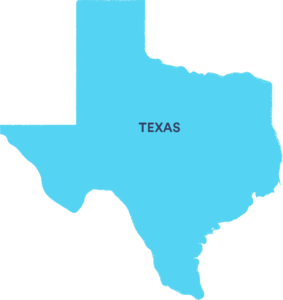 Texas paid sick leave laws
Texas paid sick leave laws
There is no Texas state law requiring private sector employers to provide employees sick leave, paid or unpaid, although many employers do grant it as an employee benefit. However, two cities in Texas – Austin and San Antonio – passed local laws requiring paid sick leave. The future of both laws is murky because of legal challenges.
Austin paid sick leave
Despite extensive legislation, there is no paid sick leave law in Austin, Texas. A Texas state appellate court on Aug. 17 blocked a paid sick leave ordinance that would have taken effect Oct. 1, 2018. A coalition of business groups, including the Texas attorney general, joined the lawsuit, arguing that it violates the state's minimum wage law. The Texas Public Policy Foundation, representing a coalition of business groups, challenged the Austin ordinance, arguing that setting minimum wage and paid time off is a decision that should be made by the state's legislature. The ordinance would require employers to grant one hour of leave for every 30 hours worked, with the amount of sick leave capped at 60 hours for large employers and 48 hours for businesses with 15 or fewer workers. The case is Tex. Ass'n of Bus. v. City of Austin.
In November, 2018,The Court of Appeals for the Third District deemed the ordinance unconstitutional, on the basis Texas Minimum Wage Act preempted city legislation. While Austin responded by requesting a review from the Supreme Court of Texas, on June 5, 2020, the Supreme Court of Texas refused to hear the petition. This denial ensured that the Third District Court's decision was upheld, the ordinance could not be implemented.
San Antonio paid sick leave
San Antonio is the second Texas city to pass a paid sick leave ordinance. However, due to challenges to a similar ordinance in Austin, the one in San Antonio has also run up against several challenges. The ordinance was scheduled to take effect on Aug. 1, 2019, for employers with more than five employees and on Aug. 1, 2021, for employers with five or fewer employees. Despite receiving local support, the courts struck down the ordinance. It was revised as a Sick and Safe Leave Ordinance in late 2019, but continues to be blocked.
If approved, all private employers doing business in San Antonio will be required to provide paid sick leave for all employees who work at least 240 hours per year within the city of San Antonio, including temporary workers.
Covered employees will be entitled to accrue one hour of paid sick leave for every 30 hours worked within the city with a yearly accrual cap of 56 hours.
An employer is not required to allow an employee to use paid sick leave on more than eight days in a given year. Accrued but unused sick leave up to the yearly cap must be carried over to the following year.
Alternatively, employers have the option to provide at least the applicable yearly cap of paid sick leave to employees at the beginning of each calendar year. Employers utilizing such a "front loading" method will avoid the need to calculate accrual and also need not allow for carryover of unused time into the following year.
Paid sick leave may be used for the employee's physical or mental illness or injury, preventative medical or healthcare or health condition; the employee's need to care for a family member's physical or mental illness, preventative medical or health care, injury or health condition; or the employee's or their family member's need to seek medical attention, seek relocation, obtain services of a victim services organization or participate in legal or court ordered action related to an incident of victimization from domestic abuse, sexual assault, or stalking involving the employee or the employee's family member.
Employers will be required to maintain records showing the amount of paid sick leave accrued and used by each employee. Employers are also required on, at least, a monthly basis to provide employees with a statement, either electronically or in writing, showing the amount of the employee's available earned paid sick leave.
Employers will also be required to post a notice setting forth the requirements of the ordinance in a conspicuous place if such a notice is created by city officials.
Questions remain as to whether or not the San Antonio law will take effect in view of a state appellate court ruling approving another temporary injunction in March, 2021.
 Vermont paid sick leave law
Vermont paid sick leave law
Vermont is the fifth state to implement a paid sick leave law. The Earned Sick Time Act has a phased-in compliance date. All employers with more than five full-time employees had to start complying with the Earned Sick Time Law on Jan. 1, 2017. Employers of five or fewer full-time employees had to start complying by Jan. 1, 2018.
One hour of sick time is accrued for every 52 hours of actual work, including overtime. The law entitles Vermont employees to earn up to 24 hours per annual period of paid leave in 2017 and 2018 and 40 hours per year of paid leave after Jan. 1, 2019, to address certain personal and family needs.
An employee can use sick time when the employee or employee's child, parent, grandparent, spouse, or parent-in-law is sick or injured. This includes an employee using sick time to help themselves or a family member to obtain health care, preventive care, or travel to an appointment related to their long-term care, or to address the effects of domestic violence, sexual assault, or stalking. An employee may use earned sick time to care for a family member because the school or business where the family member is located is closed for public health or safety reasons.
Employers have two options to provide their employees earned sick time. Employees can accrue time as they work, or can be provided with a lump sum on a yearly basis. Employers may limit accrual of sick days, but must allow accrual up to at least three paid sick days per year in the first two years, and five paid sick days per year after that.
The paid sick leave requirement does not apply to independent contractors, federal employees, employees under 18, temporary workers scheduled to work up to 20 weeks, and certain state, school, and healthcare employees.
Employers must post a notice of the earned sick time law where employees are likely to see it and in languages spoken by employees.
Retaliation against a worker who takes advantage of the leave is illegal.
 Virginia paid sick leave law
Virginia paid sick leave law
Effective July 2021, employers will be required to provide paid sick leave home health workers. As a part of House Bill 2137, a home health worker is an employee who provides personal care, respite, or companion services to an individual who receives consumer-directed services under the state plan for medical assistance. In other words, it applies to healthcare workers who provide services to individuals enrolled in Medicaid.
To be eligible, the home health worker must average at least 20 hours per week or 90 hours per month. However, they must also not be licensed, registered, or certified as a health regulatory board with the Department of Health professions or they must work less than 30 hours a month.
Home health workers can use their new paid sick leave to care for themselves or family members. Paid sick leave will begin to collect when employment begins, with one hour per every 30 hours worked, with a cap of 40 accrued hours per year. Employers can set a higher cap if they prefer.
Employers who already offer sufficient PTO or have a collective bargaining agreement (CBA) do not need to provide additional paid sick leave to a worker who is eligible under the CBA or policy. In addition, employers can't retaliate against workers for taking their paid sick leave and cannot require the employee to search for a replacement worker to take their place. Employees are also not required to work another shift to make up for their time off.
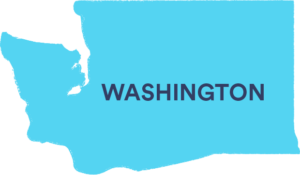 Washington state paid sick leave laws
Washington state paid sick leave laws
Washington employers are required to comply with the Paid Sick Leave law as of Jan. 1, 2018. The law applies to every Washington employer and must be offered to qualifying employees, including part-time and seasonal workers.
Employees who are doctors, lawyers, or dentists, as well as most executive managers, who are paid on a salary basis, if they supervise two or more full-time employees, are not covered by the law.
Employees accrue paid sick leave at a minimum rate of one hour of paid sick leave for every 40 hours worked.
Employers have the option to front-load, providing a fixed number of sick leave hours in advance to employees, provided they meet the law's accrual, use, and carryover requirements. At the end of the year, employees must be allowed to carry over up to 40 hours of their accrued but unused sick leave.
Qualifying employees may request paid sick leave to care for themselves, or a family member in the event of mental or physical illness, injury, or health condition, and to accommodate their need for medical diagnosis, care, or treatment; when the employee's workplace, their children's school, or place of care, have been closed by public officials for health-related reasons; and, for absences related to domestic violence.
Employers can satisfy the notification requirements by providing details on the use of the leave as part of the employee's paystubs.
Employers may not retaliate or discriminate against employees for exercising their sick leave rights under the law.
Seattle paid sick leave
Seattle's Paid Sick and Safe Time Leave law went into effect on Sept. 1, 2012, and was later updated in March, 2020. The law applies to employers with at least one employee working in Seattle. The ordinance covers employees, hourly and overtime exempt employees, working inside Seattle's city limits, regardless of their immigration status or the location of the employer.
Earned leave amount varies, depending on the size of the employer. Employees with up to 49 full-time equivalent employees must provide one hour paid sick leave for every 40 hours worked, not to exceed 40 hours per year. Up to 40 hours of paid sick leave can be carried over to the next calendar year. Employers with 50-249 employees must provide one hour paid sick leave for every 40 hours worked, not to exceed 56 hours per year. Up to 56 hours of paid sick leave can be carried over to the next calendar year. Employers with 250 or more employees must provide one hour paid sick leave for every 30 hours worked, not to exceed 72 hours per year. Up to 72 hours of paid sick leave can be carried over to the next calendar year.
The paid sick leave can be used to deal with illness, injury or health condition of the employee or a family member, including domestic partners; or reasons related to domestic or sexual violence or stalking, etc. As per the 2020 updates, the leave can also be used when a family member's school or place of care has been closed. For employers of businesses with over 250 full-time employees, if their place of business has been closed for health or safety reasons, they must also offer paid sick leave.
Frontloading of PSST hours in advance of accrual is permitted, but employers must front load based on a reasonable estimate of hours worked and allow carry-over.
Employers must provide notification of hours accrued and used every time that wages are paid.
Employers must display a poster in the workplace explaining worker rights under the law. In addition, employers must provide written notice of the policy to workers.
An employer cannot retaliate against an employee for asserting their rights under the law.
The ordinance allows time-limited, collective bargaining agreement waivers of the requirements that are more generous than statewide paid sick leave.
Spokane paid sick leave
The city of Spokane's Earned Sick and Safe Leave Ordinance sunset on Dec. 31, 2017. The state of Washington's Paid Sick Leave is in effect as of Jan. 1, 2018.
Tacoma paid sick leave
Tacoma is the third city in Washington State to mandate paid sick leave for employees. Tacoma's paid sick leave law became effective Feb. 1, 2016. The law was amended in 2018 to more closely align with state law. The amendments became effective Jan. 1, 2018.
Paid sick leave requirements applies to all employees — full-time, part-time and temporary — working within Tacoma City Limits for 80 or more hours per year, even if the business is based in another city or state. All employees currently earn one hour for every 40 hours worked, with no limit on accrual. Employees may carry forward up to 40 hours of unused paid sick leave into the next year. Workers will be able to use all accrued hours for authorized purposes, with no limits on use.
Employers can front load paid sick leave hours for employees and allow them to use the hours in advance of accrual. Employers who front load hours are still subject to the carry over provision and must allow carryover of up to 40 hours of paid sick leave at the end of each year.
Employees can use paid sick leave to care for an illness (either the employee's or a family member's), when their place of employment has been closed by order of a public official or to care for a child whose school has been closed by order of a public official, to seek law enforcement or legal help for domestic violence or sexual assault (either for the employee or a family member), to seek safety from domestic violence, sexual assault or stalking, or for the bereavement of a family member.
For absences exceeding three days, an employer may take reasonable measures to verify or confirm that an employee's use of paid sick leave is for an authorized purpose.
Employers have to provide notice to workers about their right to paid sick leave, maintain records to document paid sick leave and certify compliance annually as part of their business license renewal.
Retaliation against workers who take advantage of the law is prohibited.
 Washington, D.C. paid sick leave law
Washington, D.C. paid sick leave law
Washington D.C.'s Accrued Sick and Safe Leave Act was implemented in 2008. The law entitles full-time and part-time employees, including undocumented workers, to paid sick and safe leave.
All employers with one or more employees and the district government are covered by the law. The amount of paid sick leave given to the employee depends on the size of the employer. Employers with 100 or more employees must provide one hour of paid leave for every 37 hours worked, not to exceed seven days per calendar year. Employers with 25-99 employees must provide one hour of paid leave for every 43 hours worked, not to exceed five days per calendar year. Employers with 24 or fewer employees must provide one hour of paid leave for every 87 hours worked, not to exceed three days per calendar year.
Casual babysitters are also not considered employees. Independent contractors, students, casual babysitters, and construction industry employees who are covered by a collective bargaining agreement or union contract are not covered by the law.
Employees are allowed to use their accrued sick and safe time leave for mental and physical illness, injuries, and health conditions; to obtain medical care, diagnosis, or preventative care. Victims of domestic violence, sexual assault, or stalking can use accrued sick and safe time to obtain services related to the domestic violence, stalking, or sexual assault, including participating in and preparing for criminal and civil legal proceedings.
If a covered employee uses three or more concurrent days of leave, then the employer is allowed to ask for reasonable documentation.
Employers are prohibited from retaliating against an employee who asserts their rights under the law.
Employers are required to post a notice for employees in English of their rights under the law. Employers are also required to post notices in any other language in which one or more employees who have limited command of English speaks.
Employers must retain records documenting hours worked by employees and paid leave taken for three years.
This article is for informational purposes and is not meant to provide legal, regulatory, accounting, or tax advice.
Bookmark(4)
Please login to bookmark
No account yet? Register
Can Sick Leave Roll Over for Exempt Employees
Source: https://www.zenefits.com/workest/the-definitive-list-of-states-and-cities-with-paid-sick-leave-laws/
Belum ada Komentar untuk "Can Sick Leave Roll Over for Exempt Employees"
Posting Komentar